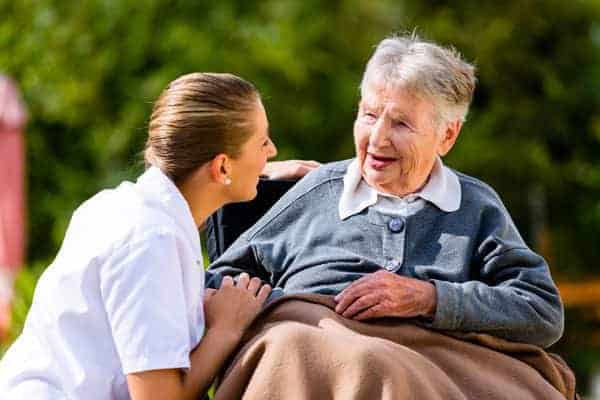Around 33% of older people fall at least once a year, often even more than that. Falling can result in visits to A&E and even extended stays in hospital. Fractured hips and other severe injuries can have a serious impact on the lives of people who fall so fall prevention should be taken seriously.
The psychological effects of a fall are also to be considered. The fear of falling can reduce the quality of life as an older person may be afraid of going out and falling again. Because they are worried about moving around in case of another fall, they may become less active and their physical wellbeing deteriorates even further – it’s a vicious cycle. Fall prevention should, therefore, play a large part in caring for older people.
Why do people fall?
There are several factors which can lead to falling in older people.
Medication
As people age their balance deteriorates over time. Some medications may make people drowsy, and, when combined with less than perfect balance, this can be a recipe for disaster. Many over-the-counter medications will cause drowsiness or dizziness so before buying any of these it is worth speaking to the pharmacist or your doctor to be sure that there are no bad side effects.
Home lighting
For any person with poor eyesight, having a room with inadequate lighting means that they may not see an obstacle which is close by and which poses a threat to falling. Poor lighting means that they may not be able to navigate easily around a piece of furniture.
Environment
A leaky roof may allow rainwater in which could cause slippery floors. If floors are left wet, even after mopping them, this increases the risk that a person will eventually slip on them and fall.
Lighting
Having too much sunlight come in through the window may cause an older person to miss objects in front of them because they are dazzled by the bright light. Extra bright rooms may mean that they need to squint to see things clearly. Rooms which are too dark can pose the same risk.
Shoes and clothing
Shoes that do not fit well and clothing which drags on the floor or restricts walking may cause an older person to lose their balance and trip up. Long, flowing clothing items may get caught on doors or pieces of furniture, while shoes which have no decent grip will cause slipping and tripping. Having heels which are too high is another cause of overbalance and falls.
How to reduce falls
Check the medication
Often there are alternative medications which do not cause drowsiness or dizziness so can contribute to fall prevention. If you take care of a person who has fallen, you may want to talk to their doctor to see if this can be done. A simple change of medication may be all it takes to resume a good quality of life.
Check the environment
Try to put yourself in the place of the person who has fallen. Try to imagine if you were blinded by sunlight or unbalanced. There are several ways to make the environment safer. Loose rugs can be removed or fastened down securely. Small side tables can be placed elsewhere and out of the line of movement. Curtains can be tied back or blinds pulled down. Bed coverings can be tucked in.
Check clothing and shoes
Select shoes that fit well and are not loose. High heels should not be worn. Make sure that the soles of shoes are not slick. Long flowing robes can be shortened so that they do not drag on the floor or catch on pieces of furniture.
Lighting
If table lamps are dull the bulbs should be replaced to give adequate lighting. Too dark an area does not show up things which can be a danger. Also, too bright lighting may cause a person to not see because of the glare so consider installing simple roller blinds to minimise this problem.
Physical fitness
The benefits of exercise include better balance, stronger muscles and bones, all of which reduce the risk of falls. Good physical fitness a a key fall prevention strategy. If you are uncertain about which exercises are appropriate you should talk to the district nurse or occupational therapist who will draw up a programme to follow.
Use appropriate aids
Perhaps the older person could walk better with the use of a walking stick or walker when they move around the house. If this is the case, then make sure that the area is cleared of obstacles so they can move safely.
Eat well
Healthy eating habits mean a healthy body which in turn will encourage better brain function. Likewise, adequate liquid during the day will also keep a person healthy and alert.
To sum up
Falling should not be accepted as a part of growing old. With a few common sense and easy to implement measures, an older person can still be safe in their own home and enjoy a good quality of life.
This article was provided by www.liveincarefriends.co.uk helping carers find live in care jobs faster.

